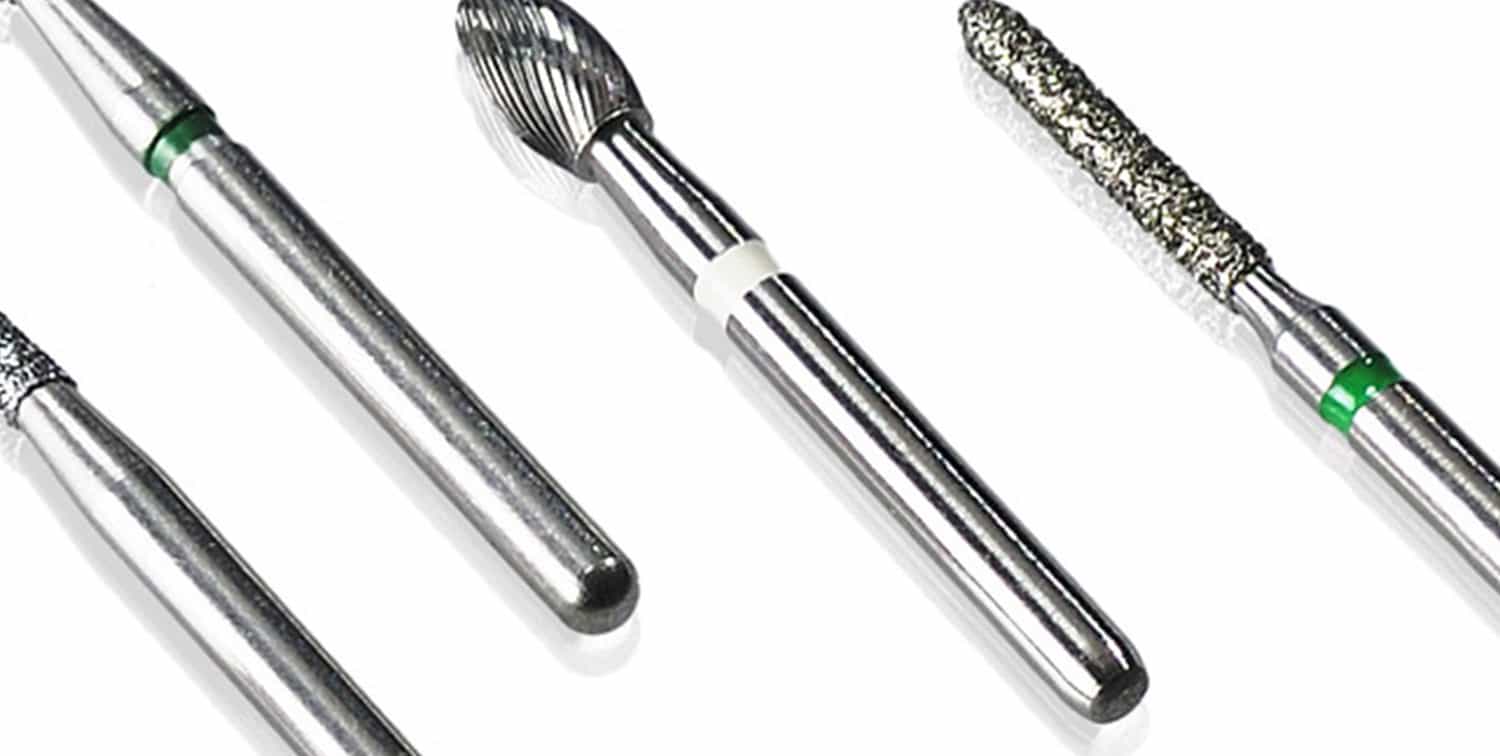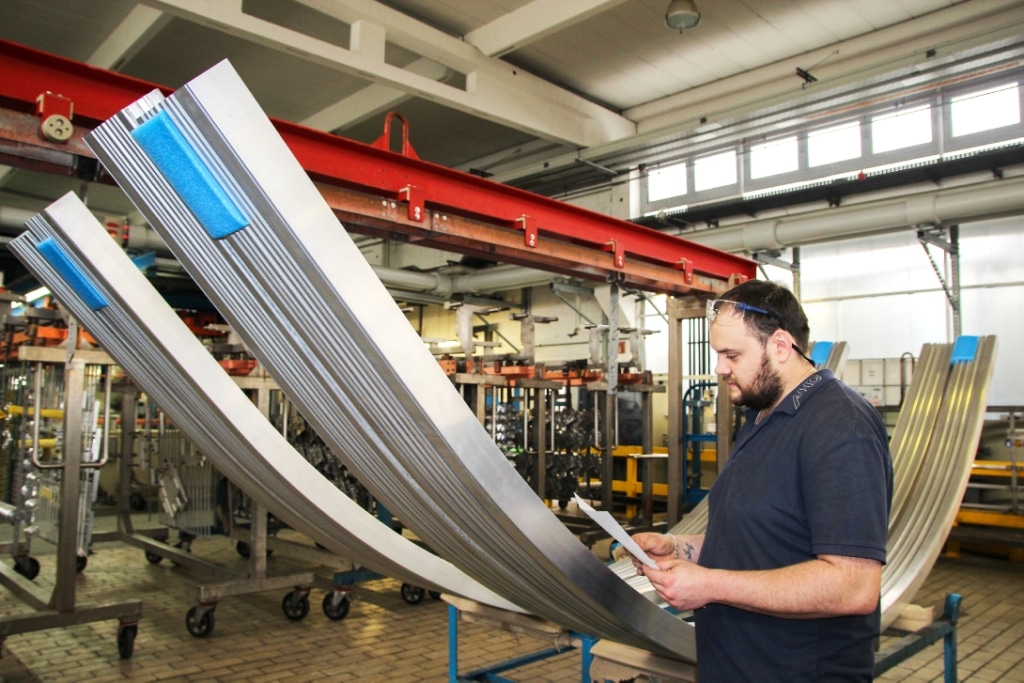vacuum hardening
what is vacuum hardening?
Vacuum hardening is a heat treatment process of metal components carried out under controlled partial pressure, during which temperatures of up to 1,300 °C can be reached. The aim of this process variant is the creation of bright metallic workpiece surfaces which render further mechanical processing unnecessary.
vacuum hardening process
Hardening is the heating and subsequent cooling of steel at such a speed that there is a considerable increase in hardness, either on the surface or throughout. In the case of vacuum hardening, this process is done in vacuum furnaces in which temperatures of up to 1,300 °C can be reached. The quenching methods will differ with regards to the material treated but gas quenching using nitrogen is most common.
In most cases hardening takes place in conjunction with subsequent reheating, the tempering. Depending on the material, hardening improves the hardness and wear resistance or regulates the ratio of toughness to hardness.
advantages & characteristics of vaccum hardening
- Avoidance of oxidation: The vacuumed environment prevents the formation of oxide layers on the surface of the workpiece. This keeps the surface clean and free of impurities, resulting in better surface quality.
- Prevention of deformation: Uneven thermal stresses are minimized, resulting in less deformation of the workpiece. This is particularly important for precision-manufactured parts, where dimensional accuracy and shape precision are crucial.
- Reduced processing times: Since vacuum hardening takes place in an environment without reaction gases, no costly cleaning or finishing steps are required. This results in reduced processing times and higher productivity.
- Improved material properties: Vacuum hardening results in improved material properties, including higher hardness and wear resistance. Precise control of the hardening process allows tailored properties to be achieved for specific applications.
- Environmentally friendly: Vacuum hardening does not require the use of harmful reaction gases, resulting in an environmentally friendly hardening option. It reduces the emission of harmful emissions and waste that can occur with conventional hardening processes.
suitable steels for vaccum hardening
Practically all technically interesting steel alloys, such as spring steels, cold-worked steels, quenched and tempered steels, anti-friction bearing steels, hot-worked steels and tool steels, as well as a large number of high-alloy stainless steels and cast-iron alloys, can be hardened.
Vacuum hardening however, is mostly used for high-alloy steels and steels that require a bright metallic workpiece surface.
- Tool steels: Tool steels are commonly used for cutting tools, molds and other tools that require high hardness and wear resistance. Examples of tool steels suitable for vacuum hardening are AISI D2 (material number 1.2379), AISI O1 (material number 1.2510) and AISI M2 (material number 1.3343).
- Stainless steel: Stainless steel, also known as high-grade steel, is used in various industries due to its corrosion resistance and mechanical properties. Stainless steels such as AISI 440C (material number 1.4125) and AISI 304 (material number 1.4301) are suitable for vacuum hardening.
application of vacuum heat treatment in various industries
Vacuum hardening offers numerous advantages and is used in various industries. In the automotive industry, it improves the wear resistance, hardness and fatigue resistance of components such as transmission parts, crankshafts and piston rings. Similarly, in the aerospace industry, vacuum hardening provides high strength and improved fatigue properties for components such as turbine blades and engine parts. In toolmaking, it increases the service life and wear resistance of tools such as stamping and bending dies. In addition, vacuum hardening in medical technology ensures high precision, hardness and corrosion resistance in surgical instruments and implants. General metalworking also benefits from the advantages of vacuum hardening, especially for precision components for the electronics industry and mechanical engineering.
benefits from our services, from the idea to series production
- Develop individual innovations
- Clarify detailed questions
- Support from the idea to series production
- First-class support
- Highest quality – whether small or large series production
- Certified according to DIN EN ISO 9001:2015, VDA 6.1:2016 and ISO 13485:2016
frequently asked questions – vacuum hardening
What advantages does vacuum hardening offer compared to other hardening methods?
It minimizes workpiece distortion since there is no direct contact cooling. The process control is precise and reproducible, leading to consistent results. The vacuum prevents oxidation or discoloration on the surface of the workpiece.
What is the hardening depth in vacuum hardening?
The hardening depth in vacuum hardening refers to the depth to which the workpiece is hardened. It measures how deeply hardening processes, such as martensite formation, penetrate into the material. The hardening depth depends on various factors, such as material composition and cooling rate.
Are there limitations to vacuum hardening?
Yes, there are some limitations to vacuum hardening. The process is not suitable for all materials, especially mild and low-alloy steels. In addition, vacuum hardening can be more expensive than other hardening processes due to the equipment required and the longer process cycle.
What Temperatures Are Used in Vacuum Hardening?
The temperatures used in vacuum hardening vary depending on the material and desired properties. Typically, temperatures range between 800 °C and 1200 °C. The exact temperature is carefully selected to achieve sufficient hardening without damaging the workpiece.
industries we serve
process locations
Any questions? Contact us directly or select a process location near you.
Eindhoven
the Netherlands 51.47035245.419001 info.eindhoven-heat@aalberts-st.com +31 40 266 3000 show locationGoffstown (New Hampshire)
United States 42.9936399-71.5222791 HT-AST-NH@aalberts-st.us (603) 945-3761 show locationGreenville (South Carolina)
United States 34.8319956-82.2940535 HT-AST-Garlington@aalberts-st.us (864) 213-9310 show locationKalisz
Poland 51.736470518.03159 info.kalisz@aalberts-st.com +48 798 804 003 show locationVenlo (Lomm)
the Netherlands 51.44642316.1786697 info.venlo@aalberts-st.com +31 77 308 1333 show locationBlackburn
United Kingdom 53.7642256-2.4548116 info.blackburn@aalberts-st.com +44 1254 264901 show locationLetchworth
United Kingdom 51.9887569-0.2038797 info.letchworth@aalberts-st.com +44 1462 472100 show locationPinto
Spain 40.2523494-3.7105911 info.madrid@aalberts-st.com +34 916 923 330 show locationAtxondo (Pais Vasco)
Spain 43.136701799453-2.5944685935974 info.paisvasco@aalberts-st.com +34 946215590 show locationKansas City
United States 39.037057-94.5273374 sales@paulo.com +1 816 861-7500 show locationSt. Louis
United States 38.6261873-90.2814872 sales@paulo.com +1 314 647 7500 show locationCleveland
United States 41.6349254-81.4225348 sales@paulo.com +1 440 946 5900 show locationUnsere Verfahren
Wir bieten weltweit alle Arten von Wärmebehandlungsprozessen an. Unsere Anlagen sind logistisch eng miteinander verknüpft, so dass Ihnen alle Verfahren zur Verfügung stehen. Erfahren Sie mehr zu unseren Wärmebehandlungsverfahren.
Heiß-Isostatisches Pressen (HIP) dient der Beseitigung von Porosität. Sie benötigen bei Lötverbindungen eine hohe mechanische Haltbarkeit und Unempfindlichkeit bei hohen Temperaturen? Wir bei Aalberts surface technologies bieten die Lösung durch Hartlöten (brazing).
Polymerbeschichtungen können auf viele Grundmaterialien aufgebracht werden und bieten lang anhaltenden Schutz. Sie sind mechanisch besonders gut mit dem Untergrund verankert und bieten verbesserte Gleiteigenschaften und/oder hohe Verschleißfestigkeit.
Mit 40 Jahren Erfahrung in der kontinuierlichen Veredelung von reel to reel können Sie sich auf Aalberts surface technologies verlassen, um innovative Lösungen zu finden. Unser Service umfasst Trommelgalvanik, kontinuierliche selektive Galvanik und Gestellgalvanik.
Fast alle metallischen Grundwerkstoffe können mit unseren selbstentwickelten und patentierten Verfahren durch Oberflächenbeschichtungen in ihren Eigenschaften optimiert werden, egal ob sie besonders hart, glatt, verschleißfest oder korrosionsbeständig sein sollen.

Discover our services
We offer all types of heat treatment processes. Our facilities are closely interlinked in terms of logistics, which means that all processes are available to you. For a complete list and description of heat treatment technologies please select the button.
Hot isostatic pressing (HIP) is used to eliminate porosity. Do you need high mechanical durability and insensitivity to high temperatures for solder joints? We at Aalberts surface technologies offer the solution through brazing.
Polymer coatings can be applied to a wide variety of base materials and offer long-lasting protection. They are particularly well anchored mechanically to the substrate. Additional enhancement layers allow non-stick coatings to be combined with improved sliding properties and/or high wear resistance.
With 40 years of experience in continuous reel to reel finishing, you can depend on Aalberts surface technologies to find innovative solutions that other companies might say are impossible. Our service includes barrel plating, continuous selective plating and rack plating.
Almost all metallic base materials can have their properties optimised by surface coatings using our proprietary and patented processes, regardless of whether they should be particularly hard, smooth, wear-resistant or corrosion-resistant.

The Aalberts websites use cookies (read more) to analyse website usage and improve usability. We also use third party tracking-cookies to measure user preferences, enable content sharing on social media and interest-based advertising. If you hit 'accept' you allow to us to place the different types of cookies.
privacy overview
| Cookie | Duration | Description |
|---|---|---|
| cookielawinfo-checkbox-analytics | 1 year | This cookies is set by GDPR Cookie Consent WordPress Plugin. The cookie is used to remember the user consent for the cookies under the category "Analytics". |
| cookielawinfo-checkbox-necessary | 1 year | This cookie is set by GDPR Cookie Consent plugin. The cookies is used to store the user consent for the cookies in the category "Necessary". |
| cookielawinfo-checkbox-others | 1 year | This cookie is set by GDPR Cookie Consent plugin. The cookie is used to store the user consent for the cookies in the category "Others". |
| cookielawinfo-checkbox-performance | 1 year | This cookie is set by GDPR Cookie Consent plugin. The cookie is used to store the user consent for the cookies in the category "Performance". |
| elementor | never | This cookie is used by the website's WordPress theme. It allows the website owner to implement or change the website's content in real-time. |
| Cookie | Duration | Description |
|---|---|---|
| cookielawinfo-checkbox-functional | 1 year | The cookie is set by GDPR cookie consent to record the user consent for the cookies in the category "Functional". |



